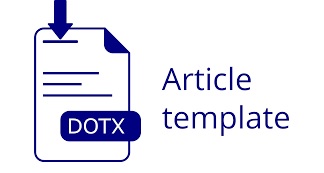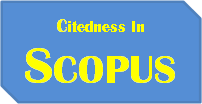Evaluasi Kebijakan Digitalisasi Administrasi Publik Kabupaten Minahasa: Pendekatan Human Center Governance
DOI:
https://doi.org/10.30656/sawala.v13.i1.10498Keywords:
Public Administration Digitalization, Human-Centered Governance, Policy EvaluationAbstract
Digitalization in public administration is crucial but faces obstacles in Minahasa, including low digital literacy, limited infrastructure, and minimal public involvement. This study used a qualitative descriptive method with purposive sampling. Data were collected through interviews, observations, and document reviews, then analyzed using the CIPP model (Context, Input, Process, Product). Findings show that digital services are poorly aligned with local needs. Infrastructure and HR limitations hinder implementation, while community involvement remains low. Digital transformation in Minahasa has been technocratic, lacking user-centered design. Applying human-centered governance can bridge gaps between service design and citizen needs.
References
Abdussamad, Z. (2020). Cakrawala Pelayanan Publik di Negara Dunia ke Tiga. https://doi.org/10.31219/osf.io/uyzax
Abdussamad, Z. (20211). Metode Penelitian Kualitatif (P. Rapanna, Ed.). CV. Syakir Media Press.
Bason, C. (2010). Leading public sector innovation (Vol. 10). Policy Press.
Cordella, A., & Tempini, N. (2015). E-government and organizational change: Reappraising the role of ICT and bureaucracy in public service delivery. Government Information Quarterly, 32(3), 279–286. https://doi.org/10.1016/j.giq.2015.03.005
Creswell, J. W., & Creswell David J. (2022). Research Design Qualitative, Quantitative, and Mixed Methods Approaches,Sixth Edition. Sage College Publishing .
Denhardt, J. V., & Denhardt, R. B. (2015). The New Public Service. Routledge. https://doi.org/10.4324/9781315709765
Dunn, William. N. (2015). Public policy analysis (5th ed.). Routledge .
Gioh, A. (2021). PELAYANAN PUBLIK E-GOVERNMENT DI DINAS KOMUNIKASI INFORMATIKA KABUPATEN MINAHASA. Politico : Jurnal Ilmu Politik , 10(1).
Mergel, I., Edelmann, N., & Haug, N. (2019). Defining digital transformation: Results from expert interviews. Government Information Quarterly, 36(4), 101385. https://doi.org/10.1016/j.giq.2019.06.002
Mergel, I., Gong, Y., & Bertot, J. (2018). Agile government: Systematic literature review and future research. Government Information Quarterly, 35(2), 291–298. https://doi.org/10.1016/j.giq.2018.04.003
Osborne, S. P. (2010). The New Public Governance? (S. P. Osborne, Ed.). Routledge. https://doi.org/10.4324/9780203861684
Rantung, M. (2022). Efektivitas Pelayanan Administrasi Online di Masa Pandemi di Dinas Kependudukan dan Catatan Sipil Kabupaten Minahasa. Jurnal Ilmiah Mandala Education, 8(2). https://ejournal.mandalanursa.org/index.php/JIME/article/view/3048
Rawis, R., Ruru, J., & Kolondam, H. (2022). PENGARUH KUALITAS PELAYANAN PUBLIK TERHADAP KEPUASAN MASYARAKAT DI KANTOR DESA KANONANG LIMA KECAMATAN KAWANGKOAN BARAT KABUPATEN MINAHASA. Jurnal Adminstrasi Publik , 8(114), 45–56.
Stufflebeam, D. L. (2014). Evaluation theory, models, and applications. Jossey-Bass & Pfeiffer Imprints, Wiley.
Downloads
Published
License
Copyright (c) 2025 Margareth Inof Riisyie Rantung, Zuchri Abdussamad , Rahma A. Alhasni

This work is licensed under a Creative Commons Attribution-NonCommercial-ShareAlike 4.0 International License.








